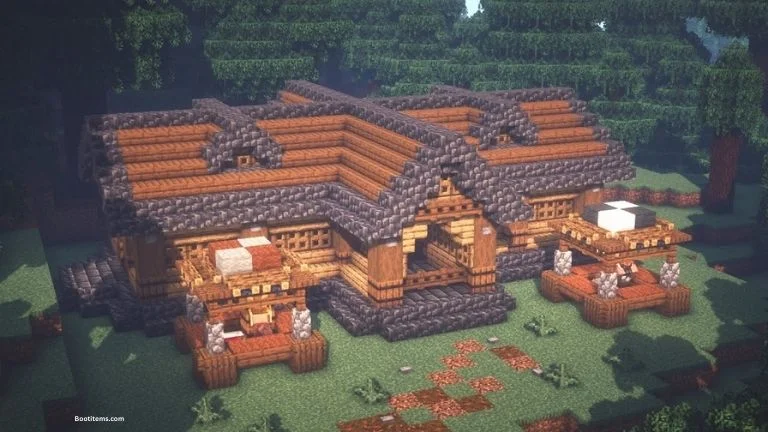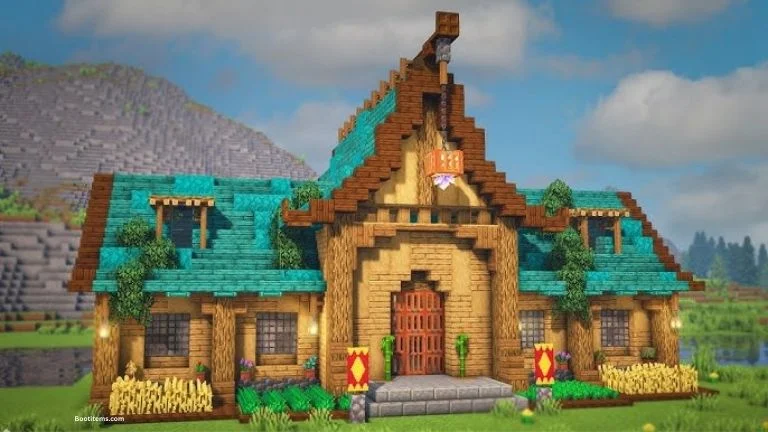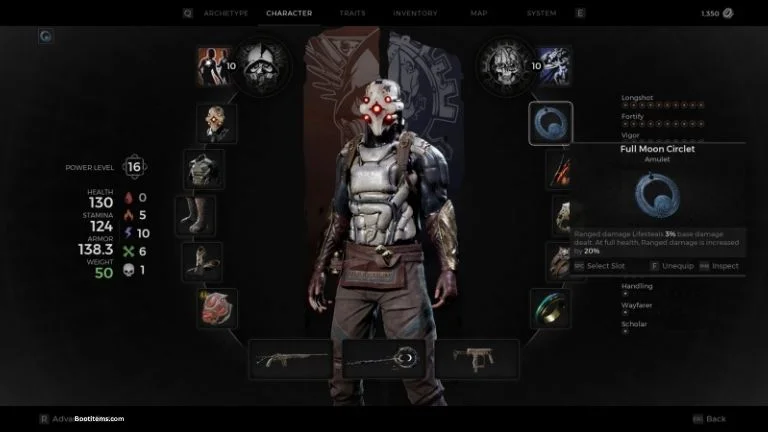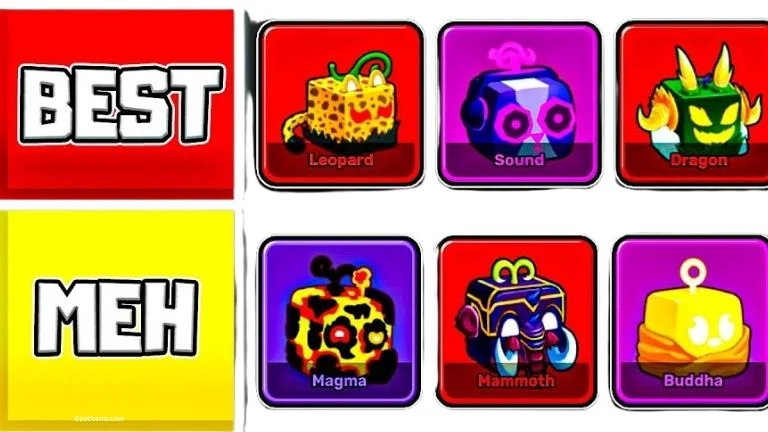Villager Trading Hall Design: Build Guide for Minecraft
A villager trading hall in Minecraft is a structure that houses multiple villagers with different professions, allowing players to access various trades efficiently in one location.
What is a Villager Trading Hall?
A villager trading hall is a purpose-built structure in Minecraft that contains multiple villagers with different professions. These halls keep villagers in isolated locations paired with their job blocks to facilitate different types of trades. Trading halls are essential for players who want to maximize their trading efficiency and have easy access to all the different villager professions in one central location.
The main benefits of building a trading hall include:
- Easy access to all villager professions
- Ability to reroll trades until you get the ones you want
- Protection for your villagers from zombies and other threats
- Organized system that saves time when trading
- Potential for implementing zombie discounts for better prices
Why You Need a Trading Hall
Trading with villagers is one of the most powerful mechanics in Minecraft. Through villager trading, you can obtain items that are otherwise difficult or impossible to get, such as enchanted books with specific enchantments, diamond tools and armor, and special items like name tags.
A well-designed trading hall lets you access these valuable trades whenever you need them without having to search for specific villagers throughout a village.
Popular Villager Trading Hall Designs
There are numerous designs for villager trading halls, ranging from simple and functional to elaborate and decorative. Let’s explore some of the most effective and popular designs that you can build in your Minecraft world.
Basic 13-Villager Trading Hall
This popular design can be completed in just a few minutes and houses all 13 different villager professions with the cheapest possible prices.
Materials Required:
- 158 Planks
- 13 Levers
- 13 Trapdoors
- 13 Pistons
- 13 Redstone
- 14 Dirt blocks
- 13 Minecarts
- 64 Rails
- 13 Splash Potions of Weakness
- 13 Golden Apples
- Name Tag or Set of Armor
- One of each job block (Blast Furnace, Smoker, Cartography Table, etc.)
Building Process:
- Foundation: Dig 13 lines that are three blocks tall, one block wide, one block deep, and one block apart from each other. Connect all the lines by digging out the top row.
- Structure Layer 1: Create an outline of planks around the previously dug foundation’s top, sides, and interior. Leave the bottom open as this will be the storefront.
- Structure Layer 2: Add a second layer similar to the first, but cover the 25-block wide line with planks. This creates a two-block tall walkable tunnel inside.
- Structure Layer 3: Cover the top of the thirteen enclosed spaces with planks to create a roof.
- Interior Setup: Dig one block deeper below where the enclosed space meets the covered tunnel and place upward-facing pistons. Add redstone at the edge of the storefront and place levers in front of each entrance.
- Trapdoor Installation: Activate the levers to raise the pistons, add opened trapdoors to the back of each piston, then deactivate the levers.
- Villager Preparation: Place a dirt block above each trapdoor to prevent villagers from escaping.
- Moving Villagers In: Use minecarts to transport villagers into position above the pistons, then activate the pistons to lift them into place.
- Profession Assignment: Place job blocks at the entrances to lock villagers in place and assign professions.
- Trade Optimization: Check trades and reroll as needed by breaking and replacing job blocks until you get desired trades.
Ultimate Villager Trading Hall
This comprehensive design by Marloe includes zombie discounting, storage, and space for many villagers with different professions.
Materials Required:
- 11 stacks + 1 stripped dark oak logs
- 6 stacks + 13 dark oak logs
- 5 stacks + 31 dark oak trapdoors
- 4 stacks + 46 dark oak slabs
- 10 stacks + 28 spruce trapdoors
- 7 stacks + 45 stripped spruce logs
- 6 stacks + 23 spruce planks
- 3 stacks + 43 spruce stairs
- 55 spruce slabs
- 32 spruce signs
- 16 spruce fences
- Various other decorative and functional blocks
Key Features:
- Two-story design with different villager sections
- Integrated zombie discounting system
- Storage system for trade items
- Aesthetic exterior with detailed decoration
- Organized layout for easy navigation
This design is more complex but offers a complete trading solution with all the features you might need. The build includes separate sections for different villager types and an integrated system for converting villagers to zombies and back to get trade discounts.
Carpet Grid Trading Hall
This clever design takes advantage of villager pathfinding mechanics to keep them in place without complex redstone or pistons.
How It Works:
- Villagers cannot pathfind past carpet blocks placed on a second floor or layer
- Dig downwards and place one layer of carpet with a block in its center
- Add a second layer with villagers and their work blocks on top
- The villagers are too tall to walk through the blocks, keeping them in place
This design is modular and can be incorporated into almost any aesthetic design you prefer. It’s particularly useful for players who want a simple containment method without dealing with complex redstone mechanisms.
Multi-Story Trading Hall
For players with limited horizontal space, building vertically is an excellent solution.
Design Elements:
- Two or more floors with different villager professions
- Arched entrance leading into the hall
- Lantern lighting for ambiance
- Small hedge planters made of slabs and leaf blocks
- Primarily constructed of varied wooden planks
This design maximizes space efficiency while maintaining an attractive appearance. The vertical layout makes it possible to fit many villagers in a relatively small footprint, making it ideal for compact bases or community areas.
Outdoor Garden Trading Hall
For players who prefer a more natural aesthetic, this design integrates the trading hall with a garden setting.
Design Features:
- Trading stalls form the perimeter of the garden
- Central water fountain as a focal point
- Hedged garden areas between trading stations
- Natural lighting and plant decorations
- Open-air design that blends with the landscape
This design creates a pleasant atmosphere for trading while incorporating natural elements. It’s particularly well-suited for players who prefer to build in harmony with the environment rather than creating large indoor structures.

Advanced Trading Hall Features
Beyond the basic designs, there are several advanced features you can incorporate into your trading hall to enhance its functionality and efficiency.
Zombie Discounting System
One of the most valuable features in an advanced trading hall is a zombie conversion system for obtaining discounted trades.
How Zombie Discounting Works:
- Expose villagers to zombies to convert them into zombie villagers
- Cure the zombie villagers using Splash Potions of Weakness and Golden Apples
- Cured villagers offer permanent discounts on their trades
- Multiple conversions can stack discounts up to a certain point
The Ultimate Villager Trading Hall design includes a built-in system for zombie conversion, with safe mechanisms to prevent villagers from escaping or being permanently lost during the process.
Automatic Villager Sorting
For large trading halls, implementing a system to automatically sort villagers by profession can save significant time.
Sorting System Components:
- Rail transport system
- Detector rails linked to redstone
- Sorting mechanisms based on profession detection
- Automatic minecart return system
This advanced feature requires more complex redstone knowledge but can dramatically streamline the process of setting up a large trading hall with many villagers.
Trade Rerolling Mechanisms
To optimize your trading hall, include mechanisms that make it easy to reroll trades until you get the ones you want.
Effective Rerolling System:
- Place one dirt block above the job block to prevent villager escape
- Break the job block to remove the villager’s profession
- Replace the job block to generate new trades
- Repeat until desired trades appear
- Complete at least one trade to lock in the profession and trades permanently
Aesthetic Considerations for Trading Halls
While functionality is important, the appearance of your trading hall can make the experience more enjoyable and showcase your building skills.
Wraparound Trading Hall with Courtyard
This design incorporates greenery with trees and azalea bushes, as well as amethyst clusters and a small pond, creating a serene atmosphere.
Design Elements:
- Villager trading stalls framed around a central courtyard
- Abundant greenery with trees and azalea bushes
- Water features like ponds or fountains
- Purple accents with amethyst to complement azaleas
- Open design that provides views from all trading stations
TheTeaBoy24’s Trading Hall
This aesthetically pleasing design incorporates bookshelf blocks as item shelves, emerald blocks and bamboo for green theming, and redstone lamps paired with lanterns for lighting.
Key Features:
- Overhead levers to open or close trapdoors for trading
- Green visuals paired with cobblestone and andesite
- Natural feeling created by using easily accessible blocks
- Bookshelf blocks arranged as display shelves
- Balanced lighting with redstone lamps and lanterns
Underground Trading Hall
For players with limited above-ground space, this design by Bauuutek fits nicely underground.
Design Elements:
- Stone brick and spruce structure
- Villagers positioned along the outer walls
- Redstone lamps for ceiling lighting
- Optional small enclosure for animal mobs or a garden
- Efficient use of underground space
Guild Trading Hall
This medieval-themed design takes inspiration from craftsmen guilds of the Middle Ages.
Decorative Elements:
- Fletcher villagers flanked by armor stands holding bows
- Bows and crossbows displayed on walls via item frames
- Maps placed on walls as decoration
- Themed decorations matching each villager’s profession
- Medieval architectural style
Practical Tips for Villager Management
Managing villagers effectively is crucial for a successful trading hall. Here are some practical tips to help you maintain your trading hall and get the most out of your villagers.
Villager Acquisition
Before you can build a trading hall, you need villagers to populate it.
Methods for Obtaining Villagers:
- Transport villagers from existing villages using boats or minecarts
- Build a villager breeder to produce new villagers
- Cure zombie villagers found in the wild
For the 13-villager trading hall design, you’ll need to find or breed 13 unemployed villagers to assign to each profession.
Profession Assignment
Assigning professions is done by placing the appropriate job block near an unemployed villager.
Job Blocks for Each Profession:
- Armorer: Blast Furnace
- Butcher: Smoker
- Cartographer: Cartography Table
- Cleric: Brewing Stand
- Farmer: Composter
- Fisherman: Barrel
- Fletcher: Fletching Table
- Leatherworker: Cauldron
- Librarian: Lectern
- Mason: Stonecutter
- Shepherd: Loom
- Toolsmith: Smithing Table
- Weaponsmith: Grindstone
Place these blocks strategically in your trading hall to assign the desired professions to your villagers.
Trade Optimization
To get the most value from your trading hall, optimize the trades offered by each villager.
Optimization Strategies:
- Reroll trades by breaking and replacing job blocks until you get desired offers
- Prioritize valuable trades like enchanted books, diamond gear, or rare items
- Use the zombie conversion method to get discounts on all trades
- Lock in good trades by completing at least one transaction with the villager
- Organize villagers by trade value or frequency of use for easy access
Maintenance and Security
Keeping your trading hall functioning properly and protecting your villagers is essential for long-term success.
Villager Protection
Villagers are vulnerable to various threats that can disrupt your trading hall.
Protection Measures:
- Ensure proper lighting (light level 7 or higher) to prevent hostile mob spawning
- Secure the perimeter with walls, fences, or other barriers
- Install iron doors or other player-only access points
- Keep villagers contained in spaces where they can’t wander into danger
- If using zombie discounting, ensure the zombies are properly contained
Regular Maintenance
Periodic maintenance will keep your trading hall running smoothly.
Maintenance Tasks:
- Restock villagers by allowing them access to their job blocks
- Replace any villagers that may have been lost to accidents or attacks
- Organize storage systems for trade items and emeralds
- Update signage or labeling systems as you add new villagers
- Expand the hall as needed to accommodate more villagers or professions
FAQ About Villager Trading Halls
How do I get villagers to offer better trades?
Convert villagers to zombie villagers and cure them to receive significant discounts. This process can be repeated multiple times for even better prices.
Why won’t my villagers change professions?
If you’ve already traded with a villager, their profession becomes locked. Only villagers you haven’t traded with can change professions when their job block is removed.
How far do villagers need to be from their job blocks?
Villagers need to be able to pathfind to their job blocks to restock their trades. They should be within 48 blocks of their job block and have a clear path to it.
Can I move a villager after I’ve found good trades?
Yes, but be careful not to break their job block until they’re securely in their new location. Once you’ve traded with them, they’ll keep their profession and trades even if temporarily separated from their job block.
How do I prevent villagers from escaping?
Use containment methods like the carpet trick, trapdoors, or pistons to keep villagers in place. Make sure there are no gaps they can pathfind through.
What’s the best villager to have in a trading hall?
Librarians (with lecterns) are often considered the most valuable due to their enchanted book trades. However, having one of each profession gives you access to the widest variety of items.

Samantha Yates is a creative writer and journalist with expertise in content creation and editing. She holds an MA in Creative Writing and brings professional experience from Lionbridge, where she developed engaging content for leading technology companies







